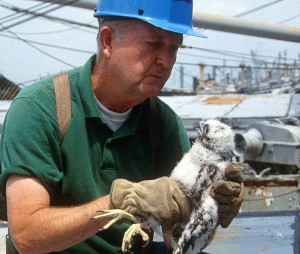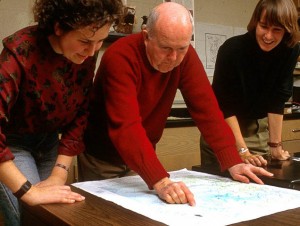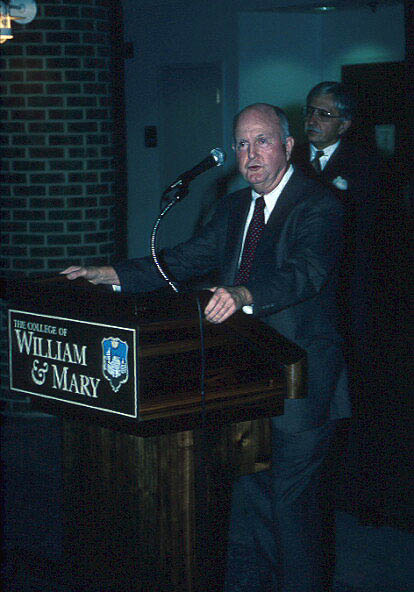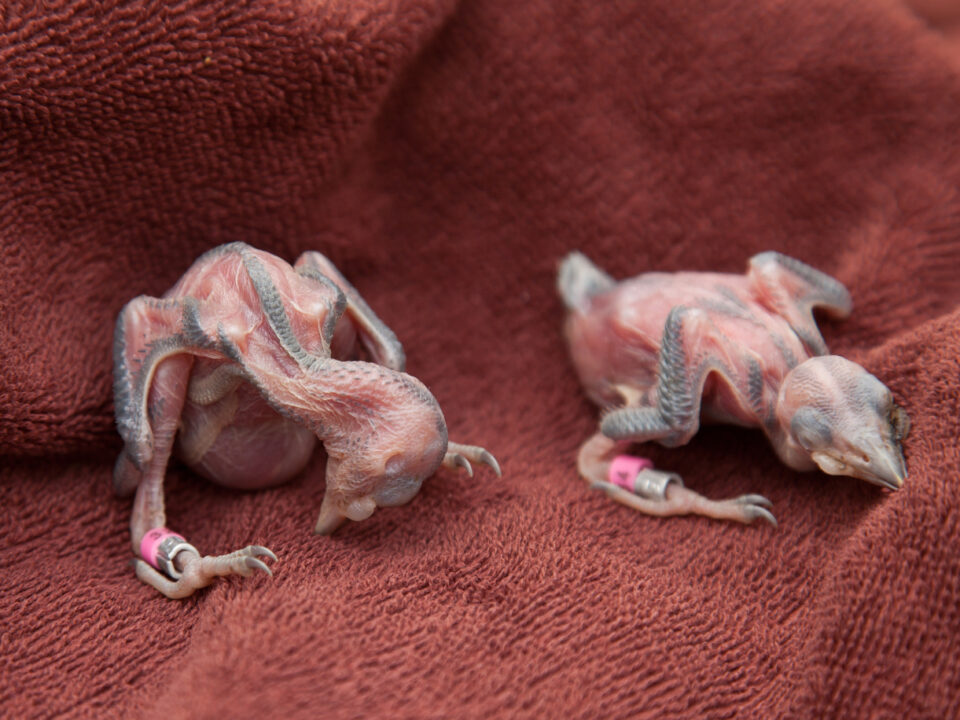New professorship honors Mitchell A. Byrd
Assessing the value of wetlands (EPA marsh surveys)
October 8, 2008Walter Post Smith and his Kiptopeke Chronicles
October 10, 2008
Written by Bryan Watts
October 9, 2008

Mitchell Byrd holding a peregrine falcon chick from a nest on a retired naval ship in the James River moth-balled Reserve Fleet. Peregrines have nested on the Reserve Fleet since 1987. Photo by Dana Bradshaw.
Mitchell A. Byrd is Chancellor Professor Emeritus of Biology at the College of William & Mary. A member of the faculty since 1956, Professor Byrd served as chairman of the biology department for thirteen years during a time of rapid growth and directed its transition to a nationally recognized department with a broad-based curriculum.

Mitchell Byrd examining a map of bald eagle nests with former graduate students Amanda Allen (left) and Ellen McLean (right). Photo by Linda Richardson.
Over the years, Professor Byrd has instructed thousands of undergraduate students and advised over three dozen graduate students. Many of these students have been inspired by his commitment to scholarship and his deep concern for each individual. Dispersed across the nation, these students have made important contributions of their own.
The successful careers of many graduates reflect a strong commitment to education, but some of Professor Byrd’s most recognized contributions to the community extend well beyond the classroom. Dr. Byrd is frequently thought of as one of the pioneers of wildlife conservation in Virginia. His contributions to the management of threatened and endangered species have been synonymous with the history of conservation in the state. In recognition of these conservation achievements, Professor Byrd has received dozens of state and regional awards. His willingness to meet and speak with public groups throughout the region has resulted in a more informed public.

Mitchell Byrd spoke during the ceremony to unveil “Soaring Eagles” a sculpture by William and Mary alumnus David Turner. The sculpture was dedicated in Professor Byrd’s honor and resides in the Sadler Center. Photo by Dana Bradshaw.
Although Professor Byrd has had many academic accomplishments, likely his most lasting legacy is his commitment to convey an environmental ethic to a public audience. The seeds that he has shown over many years have flowered into the environmental movement that we all benefit from today. The Center for Conservation Biology along with the college community seeks to acknowledge this contribution by establishing the Mitchell A. Byrd Chair in Conservation Biology. This is truly one of the highest honors that can be bestowed by the academic community.
Related posts
Adult female from Elkins Chimney territory. Both the female and male were lost from this site between 2024 and 2025 nesting seasons and were not replaced. This territory has been occupied since 1995. Five territories were vacated between 2024 and 2025 along the Delmarva Peninsula in VA. Photo by Bryan Watts



